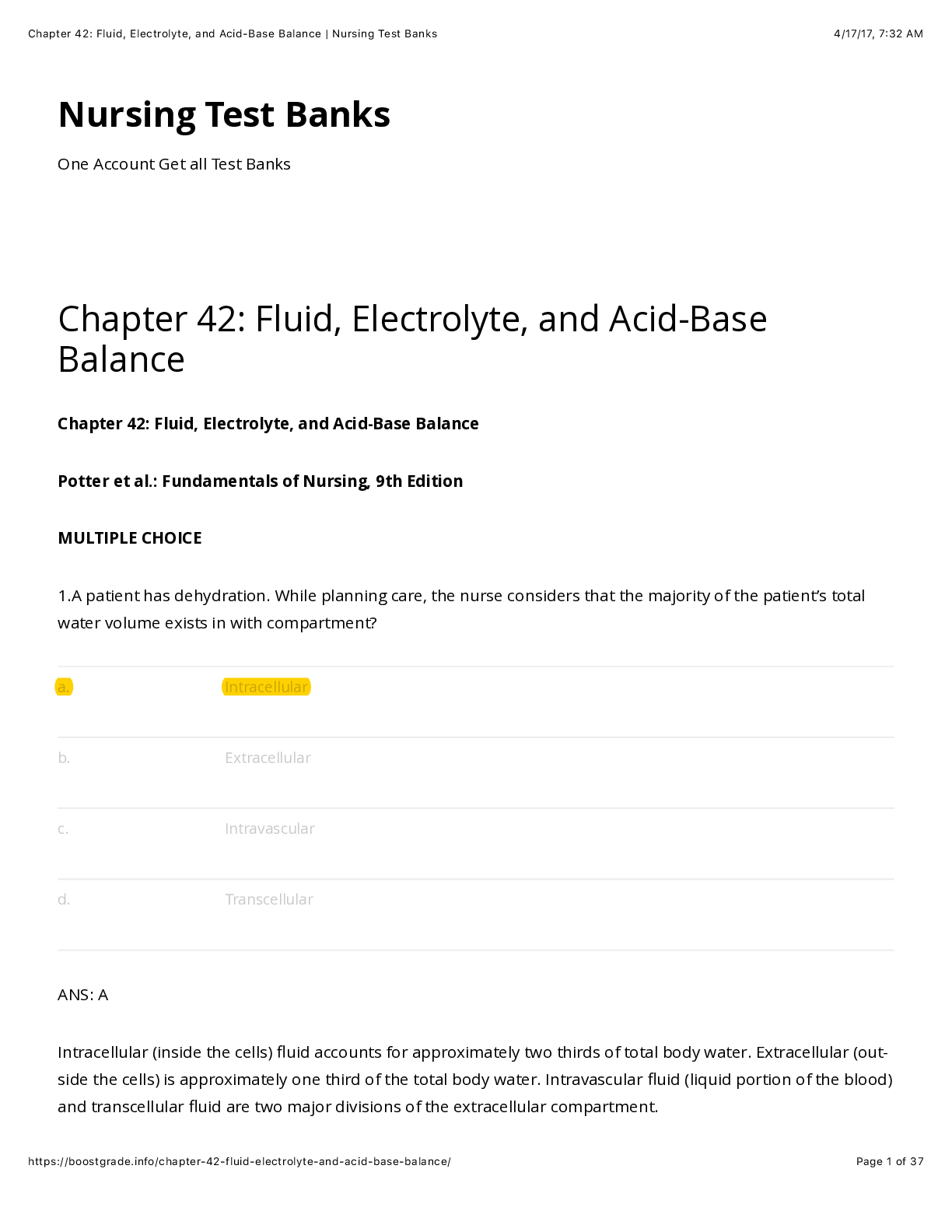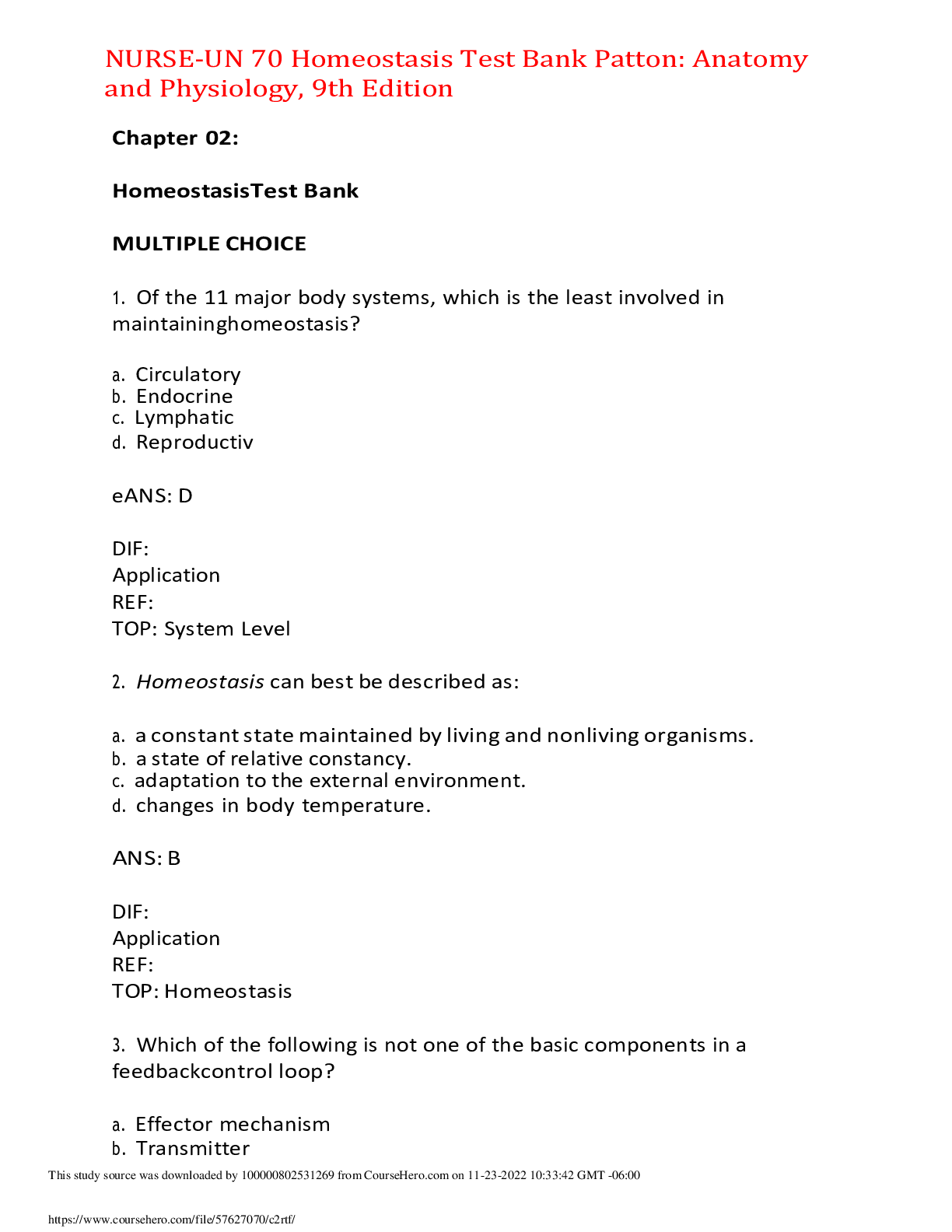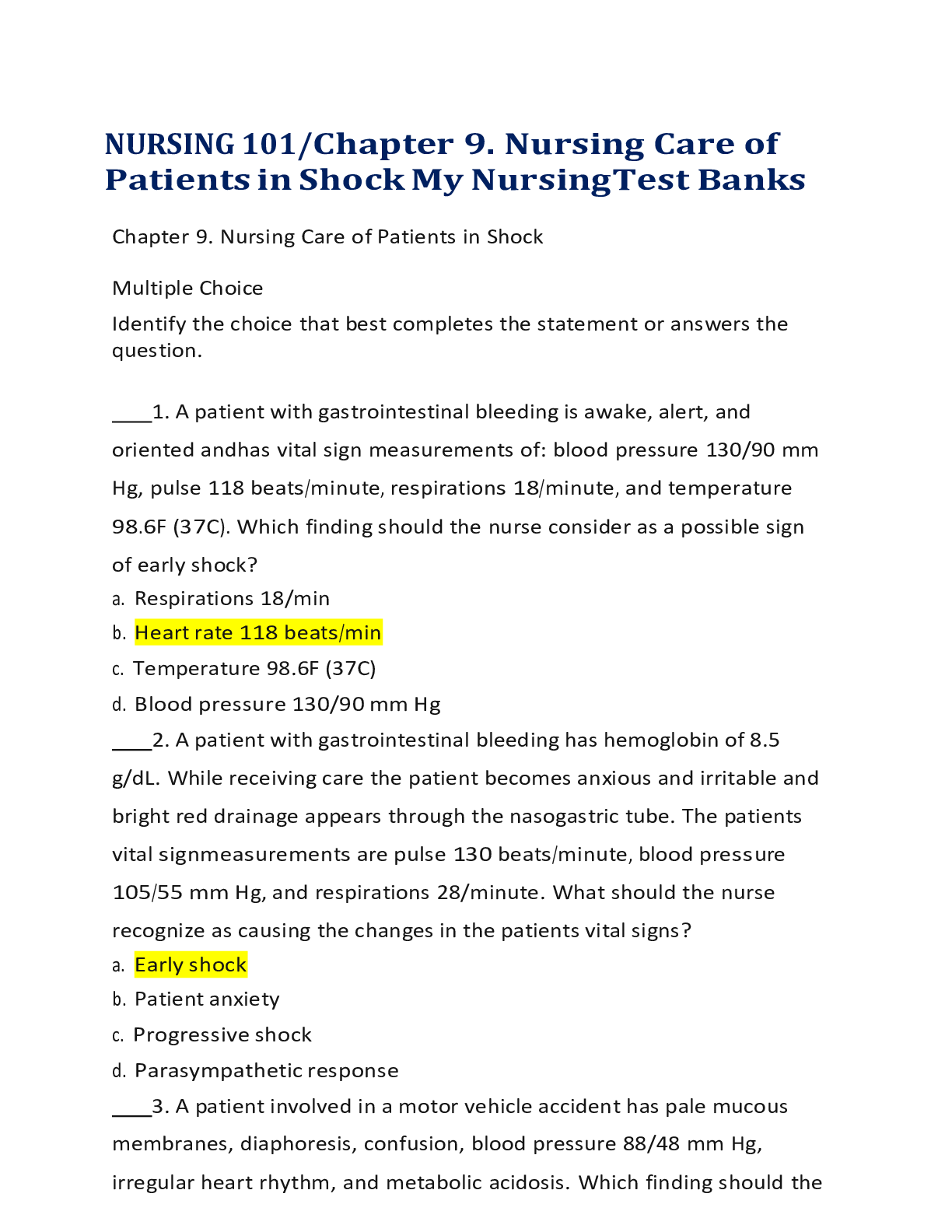NURSING PEDIATRICS > EXAM > NCLEX PEDIATRIC NURSING TEST BANK 2024 EXAM WITH COMPLETE 100 Q&A’S WITH RATIONALES GUARANTEED PAS (All)
NCLEX PEDIATRIC NURSING TEST BANK 2024 EXAM WITH COMPLETE 100 Q&A’S WITH RATIONALES GUARANTEED PASS | RATED A+
Document Content and Description Below
NCLEX PEDIATRIC NURSING TEST BANK 2024 EXAM WITH COMPLETE 100 Q&A’S WITH RATIONALES GUARANTEED PASS | RATED A+ 1. Molly, with suspected rheumatic fever, is admitted to the pediatric unit. When ob... taining the child’s history, the nurse considers which information to be most important? o A. A fever that started 3 days ago o B. Lack of interest in food o C. A recent episode of pharyngitis o D. Vomiting for 2 days Correct Answer: C. A recent episode of pharyngitis A recent episode of pharyngitis is the most important factor in establishing the diagnosis of rheumatic fever. Activation of the innate immune system begins with a pharyngeal infection that leads to the presentation of S. pyogenes antigens to T and B cells. CD4+ T cells are activated and production of specific IgG and IgM antibodies by B cells ensues (Cunningham, Pathogenesis of group A streptococcal infections, 2000). Option A: The most common presenting features of ARF are fever (>90% of patients) and arthritis (75% of patients). The most serious manifestation is carditis (>50% of patients) because it can lead to chronic rheumatic heart disease—while all other clinical features fully resolve, often within weeks. Option B: The child with ARF may exhibit a lack of interest in food, but this cannot be specific only to ARF. The main clinical manifestation of ARF carditis reflects the involvement of the endocardium, which presents as valvulitis of the mitral valve (mitral regurgitation) and, less frequently, of the aortic valve (aortic regurgitation). Option D: Although the child may have a history of vomiting, this finding is not specific to rheumatic fever. A number of other clinical features are often observed in patients with ARF but are not included as manifestations in the Jones Criteria, including lethargy, abdominal pain, and epistaxis, as well as rapid sleeping pulse rate and tachycardia out of proportion to fever. 2. The nurse is aware that the most common assessment finding in a child with ulcerative colitis is: A. Intense abdominal cramps B. Profuse diarrhea C. Anal fissures D. Abdominal distention Correct Answer: B. Profuse diarrhea The most common assessment finding in a child with ulcerative colitis is profuse diarrhea. The main symptom of ulcerative colitis is bloody diarrhea, with or without mucus. Other symptoms include blood in the toilet, on toilet paper, or in the stool. Characteristically, it involves inflammation restricted to the mucosa and submucosa of the colon. Typically, the disease starts in the rectum and extends proximally in a continuous manner. Option A: Ulcerative colitis causes intense abdominal cramps. Associated symptoms also include urgency or tenesmus, abdominal pain, malaise, weight loss, and fever, depending on the extent and severity of the disease. The onset of the disease is typically gradual, and patients will likely experience periods of spontaneous remission and subsequent relapses. Option C: Ulcerative colitis causes anal fissures. There are some extraintestinal manifestations (EIMs) that are also present in 10% to 30% of patients with ulcerative colitis. Extraintestinal manifestations associated with disease activity include episcleritis, scleritis, and uveitis, peripheral arthropathies, erythema nodosum, and pyoderma gangrenosum. Option D: Abdominal distensions are more common in Crohn’s disease. Patients with flare-ups of Crohn’s disease typically present with abdominal pain (right lower quadrant), flatulence/bloating, diarrhea (can include mucus and blood), fever, weight loss, anemia. In severe cases, perianal abscess, perianal Crohn’s disease, and cutaneous fistulas can be seen. 3. When developing a plan of care for a hospitalized child, nurse Mary knows that children in which age group is most likely to view illness as a punishment for misdeeds? A. Infancy B. Preschool age C. School age D. Adolescence Correct Answer: B. Preschool age Preschool-age children are most likely to view illness as a punishment for misdeeds. When children in this age group become seriously ill, they may think it’s punishment for something they did or thought about. They don’t understand how their parents could not have protected them from this illness. Option A: Separation anxiety, although seen in all age groups, is most common in older infants. Keeping a consistent routine is important for a baby and their caregivers. Because babies can’t talk about their needs, fear is often expressed by crying. Option C: Fear of the unknown, loss of control, and separation from family and friends can be the school-aged child’s main sources of anxiety and fear related to death. They may fear their own death because of the uncertainty of what happens to them after they die. Option D: Fear of death is typical of adolescents. Adolescents also fear mutilation. Most teens are starting to establish their identity, independence, and relation to peers. The main theme in teens is feeling immortal or being exempt from death. Their realization of their own death threatens all of these objectives. [Show More]
Last updated: 9 months ago
Preview 5 out of 104 pages

Loading document previews ...
Buy this document to get the full access instantly
Instant Download Access after purchase
Buy NowInstant download
We Accept:

Reviews( 0 )
$23.00
Can't find what you want? Try our AI powered Search
Document information
Connected school, study & course
About the document
Uploaded On
Oct 12, 2024
Number of pages
104
Written in
Additional information
This document has been written for:
Uploaded
Oct 12, 2024
Downloads
0
Views
23


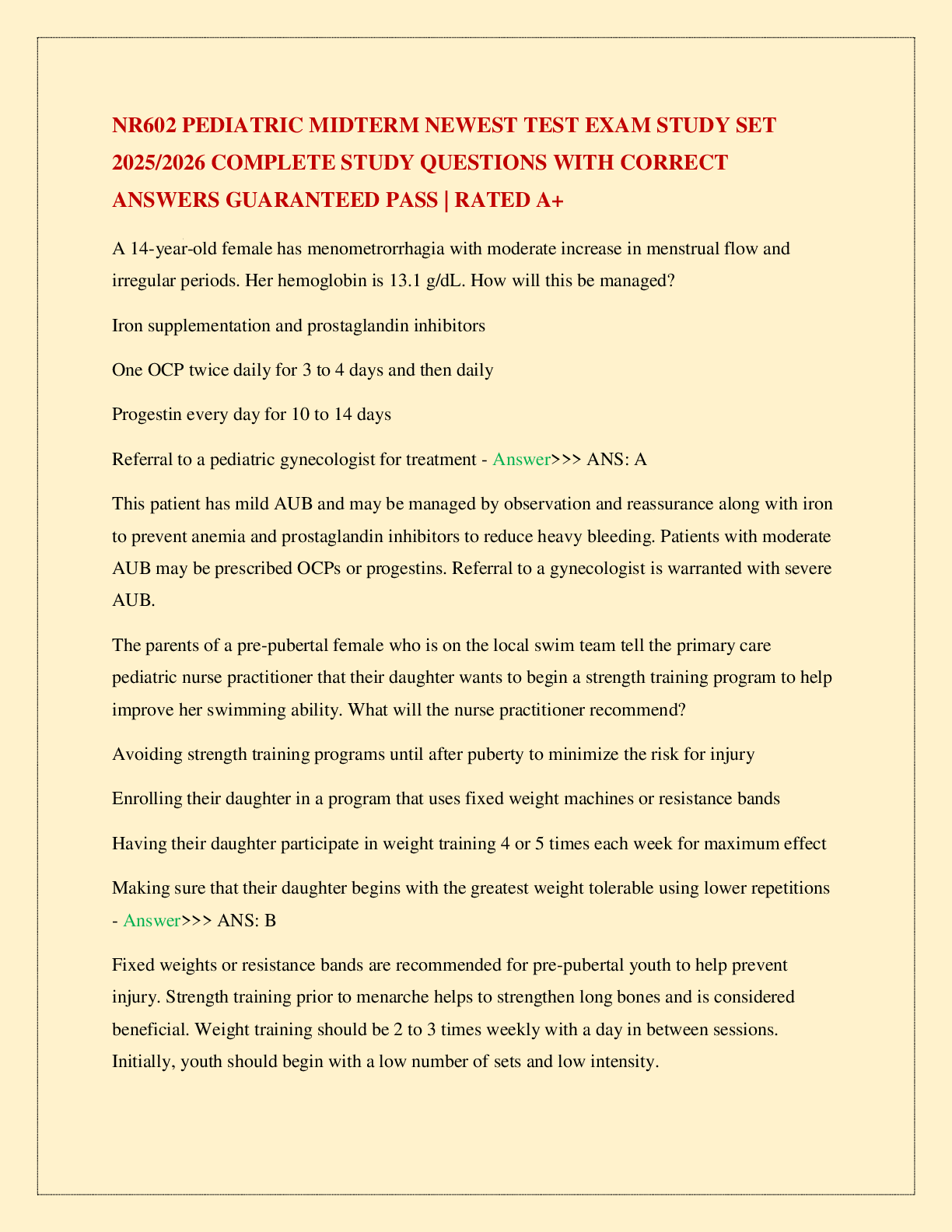
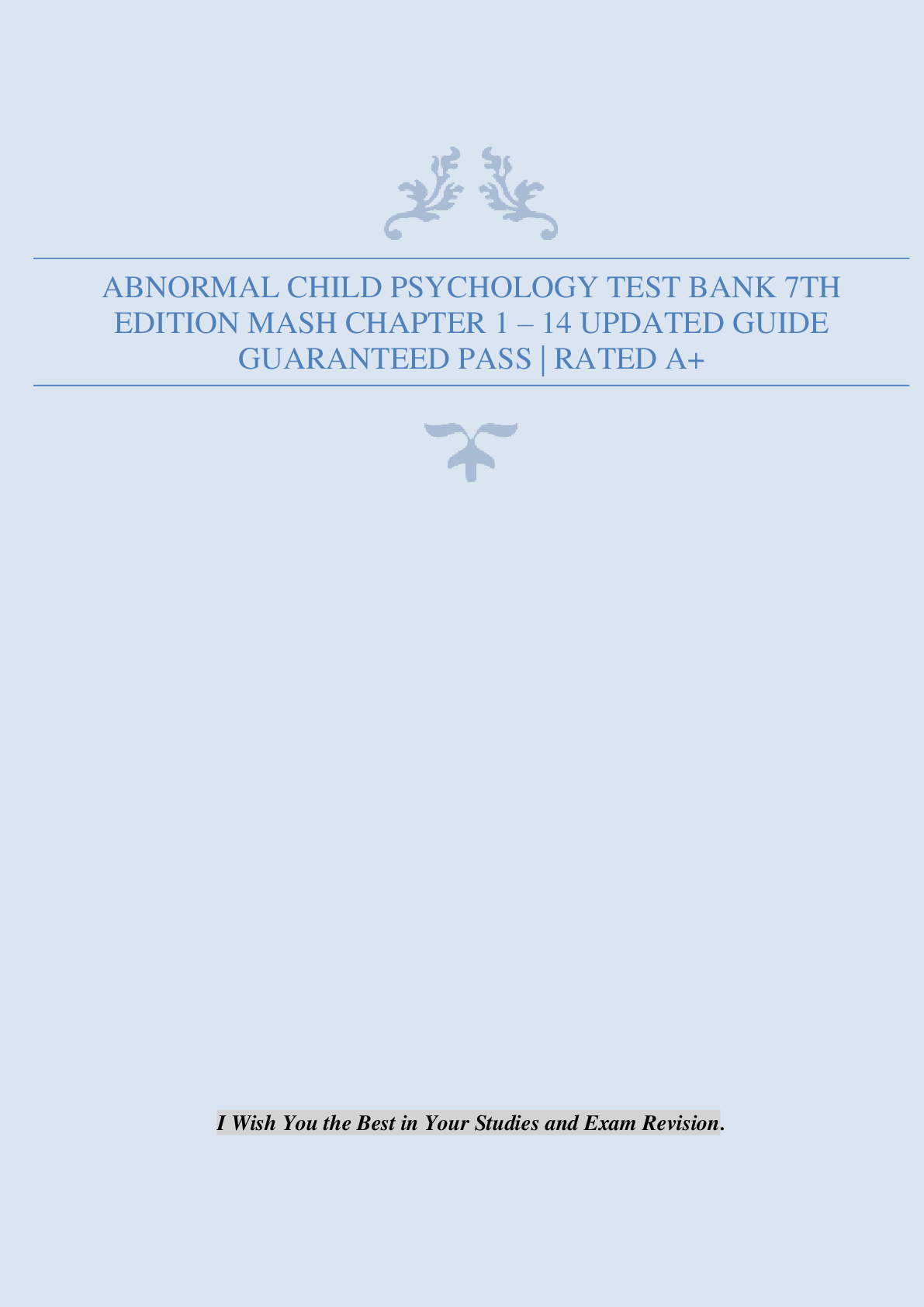
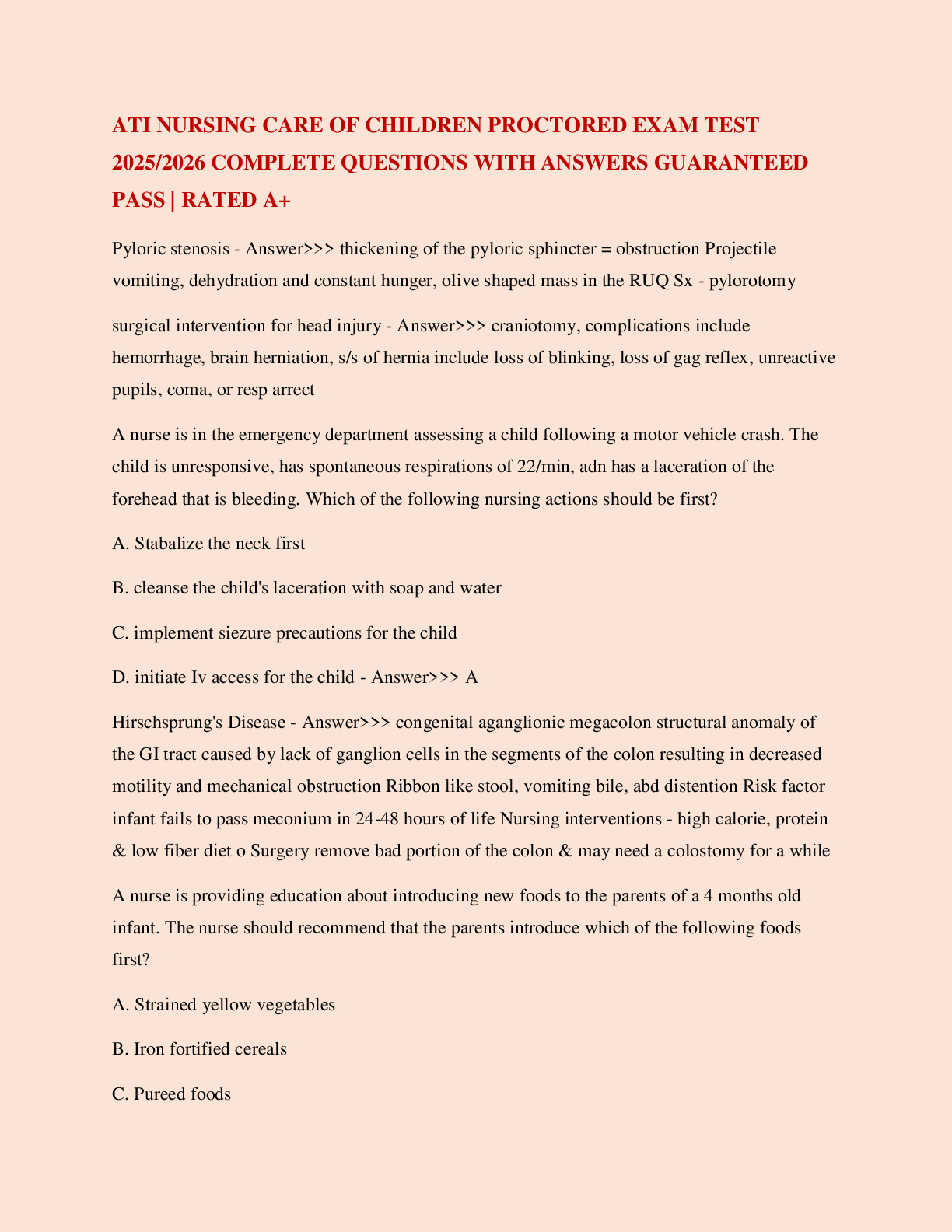

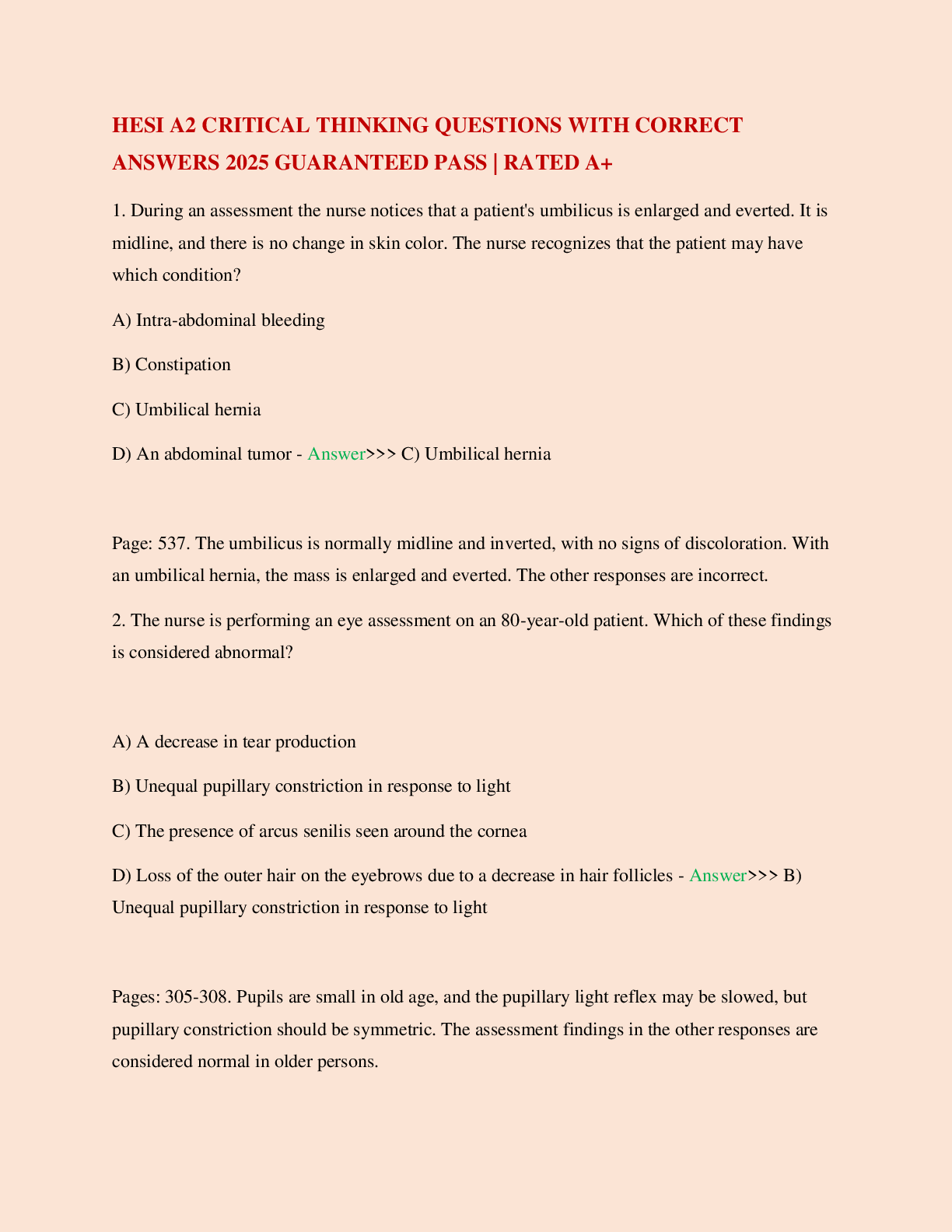
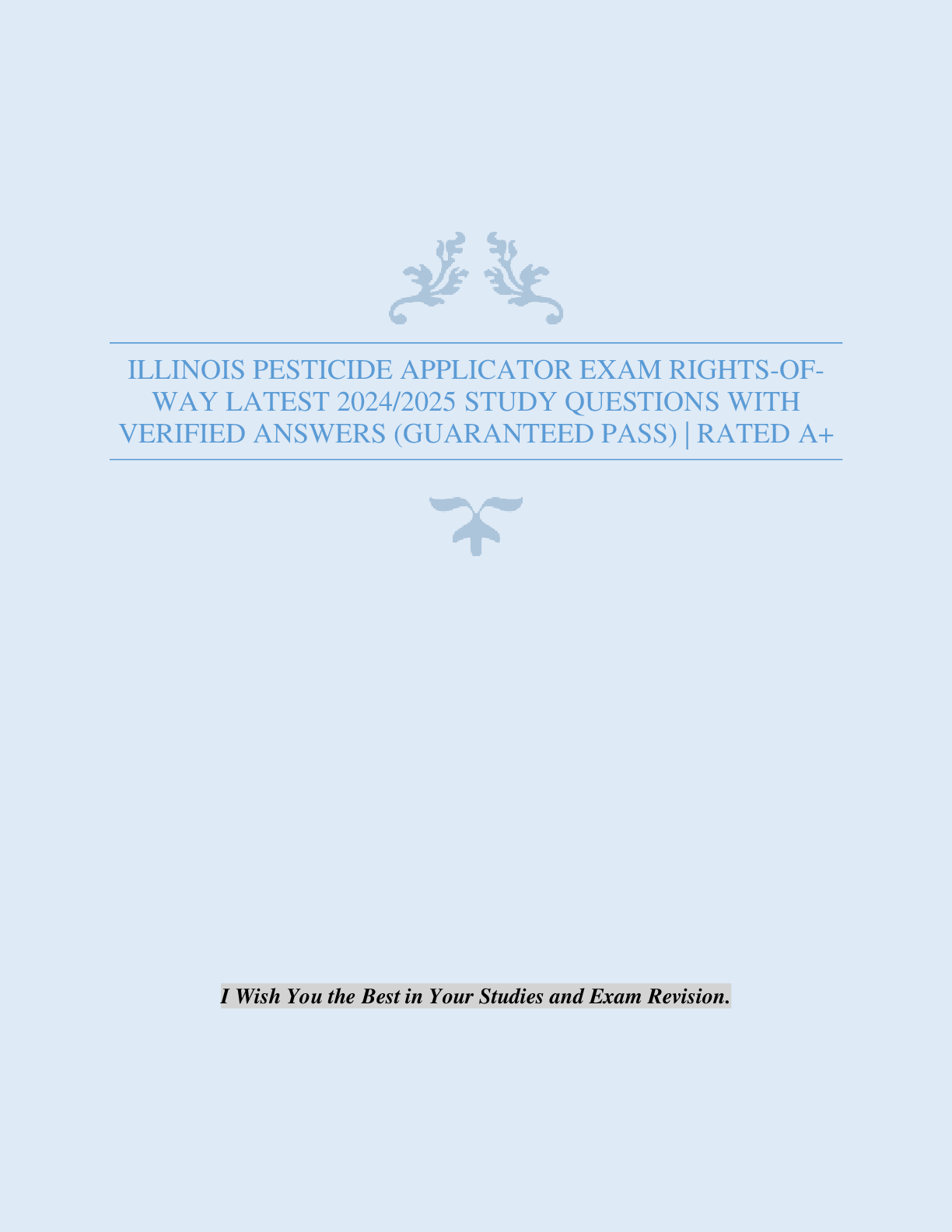

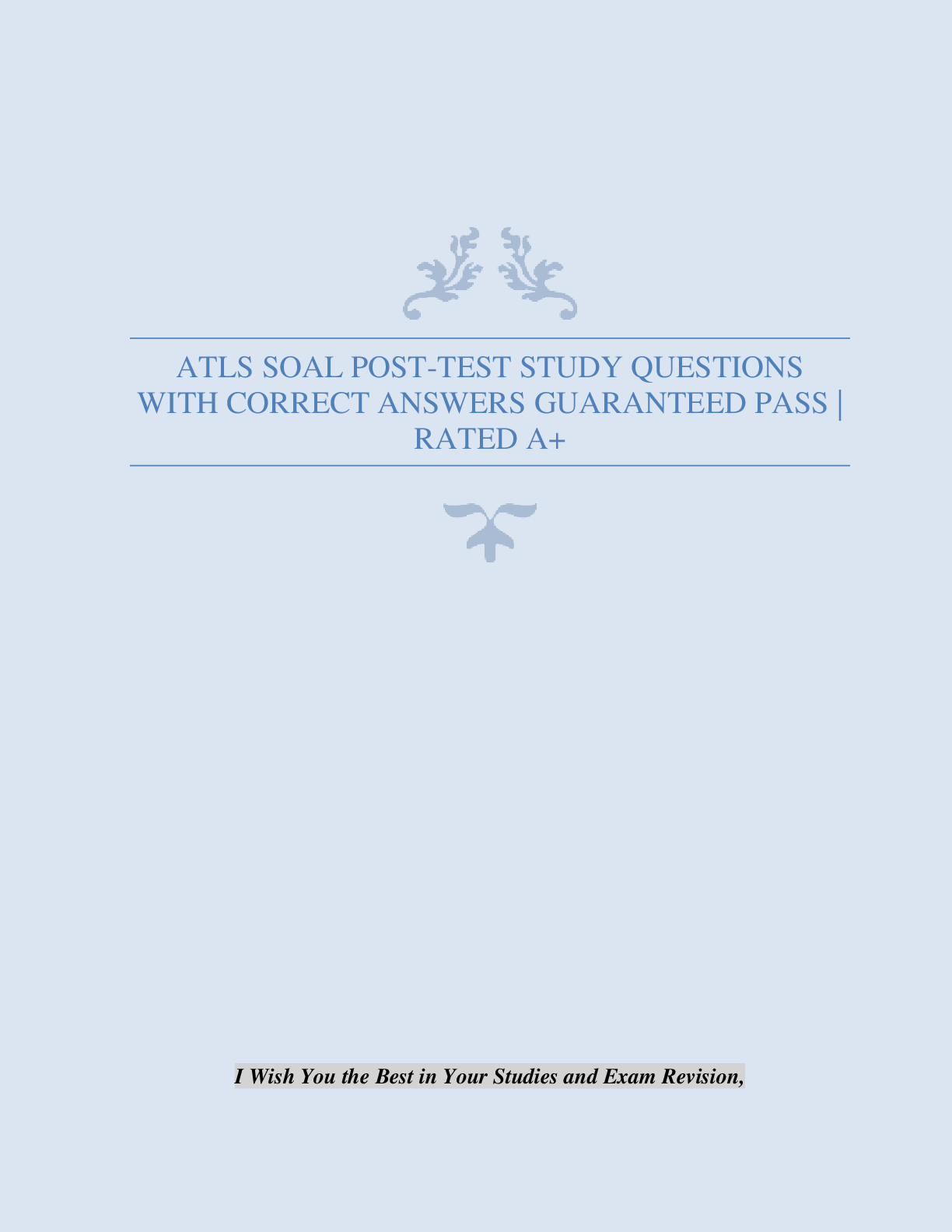
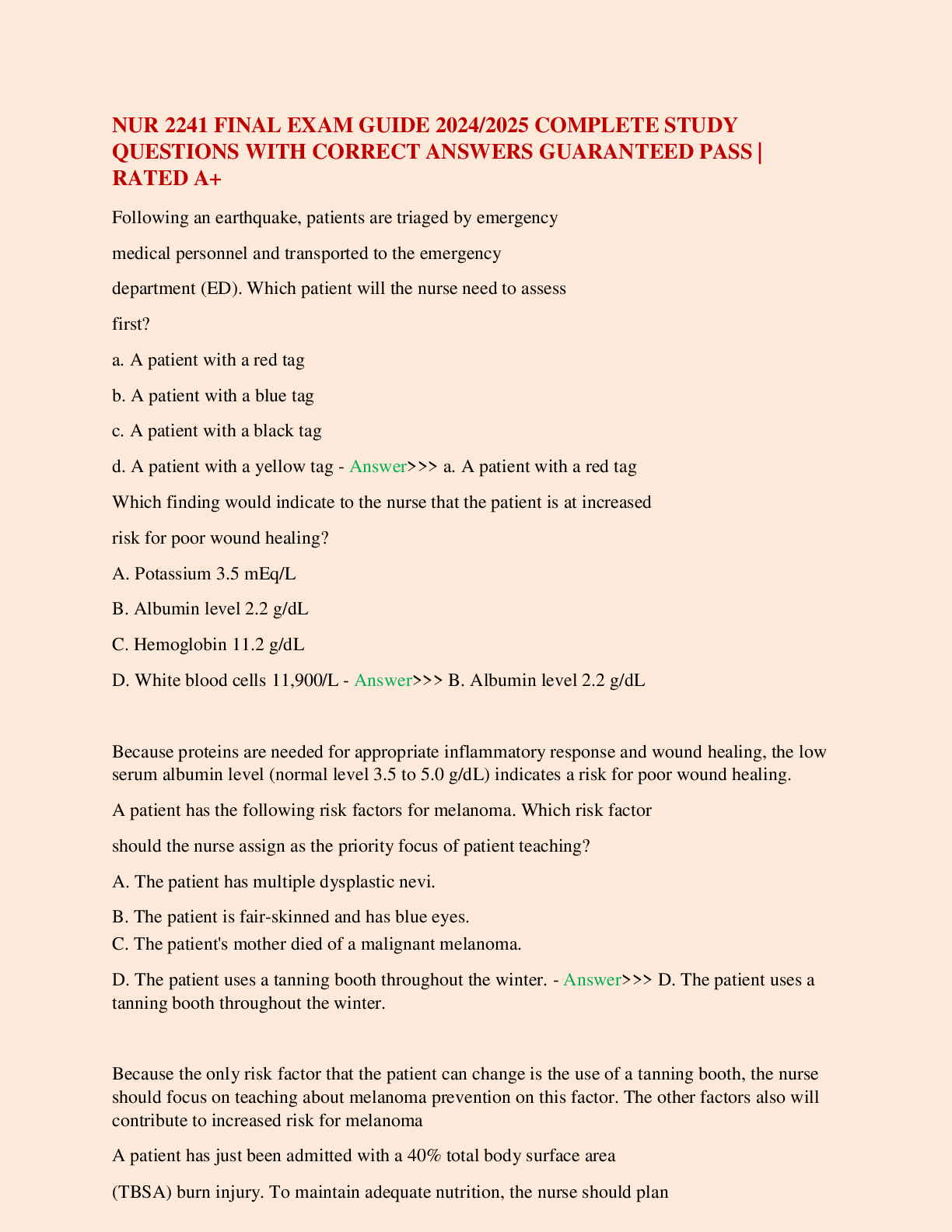
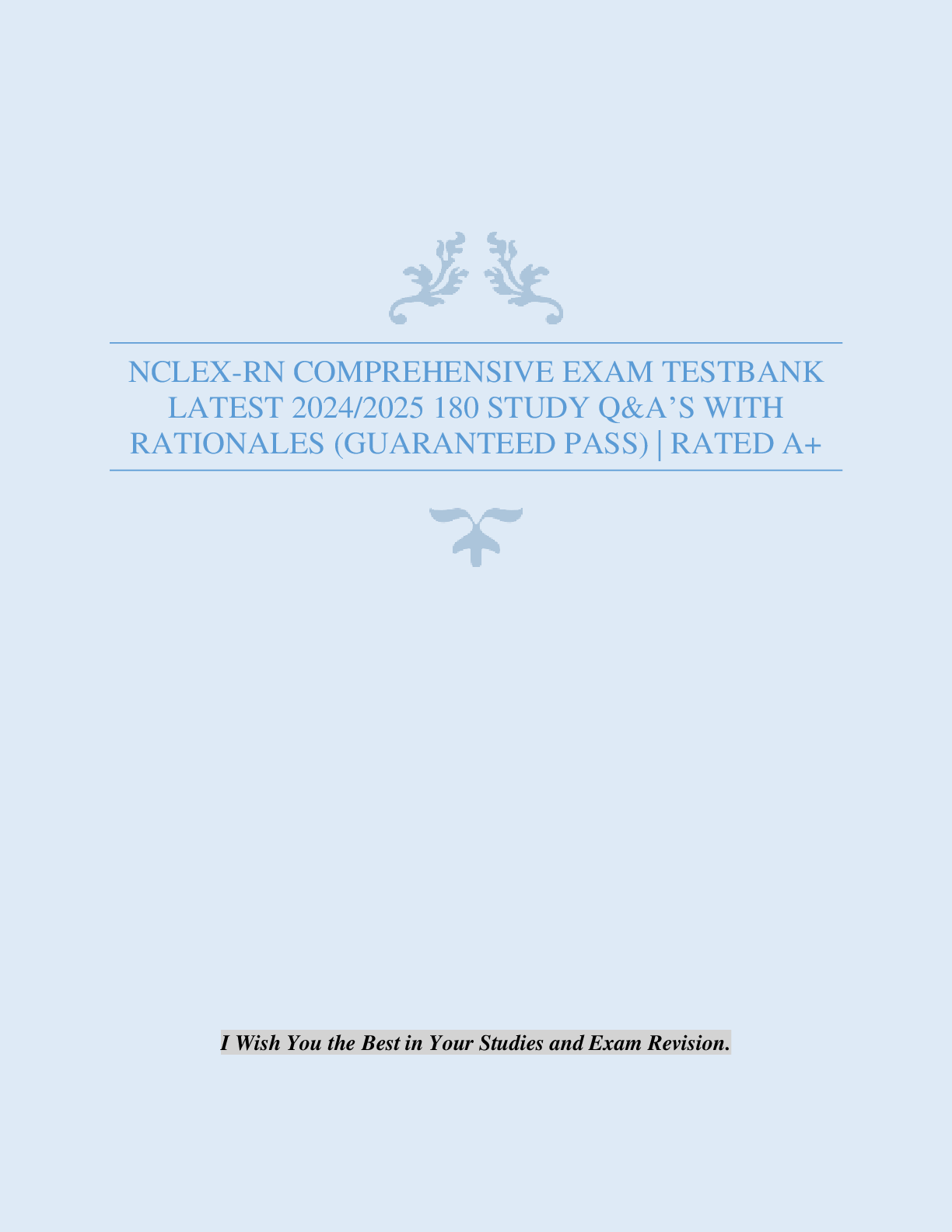
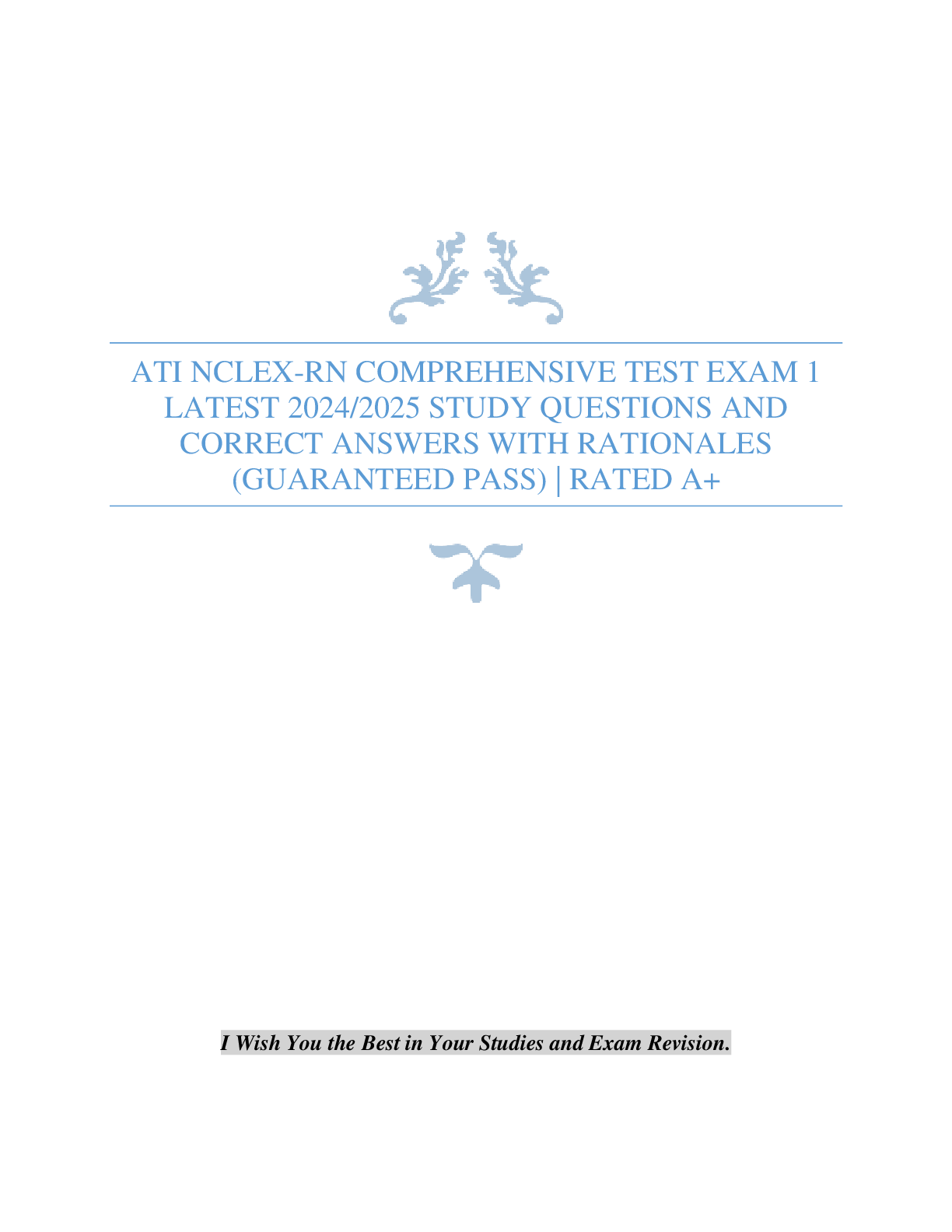
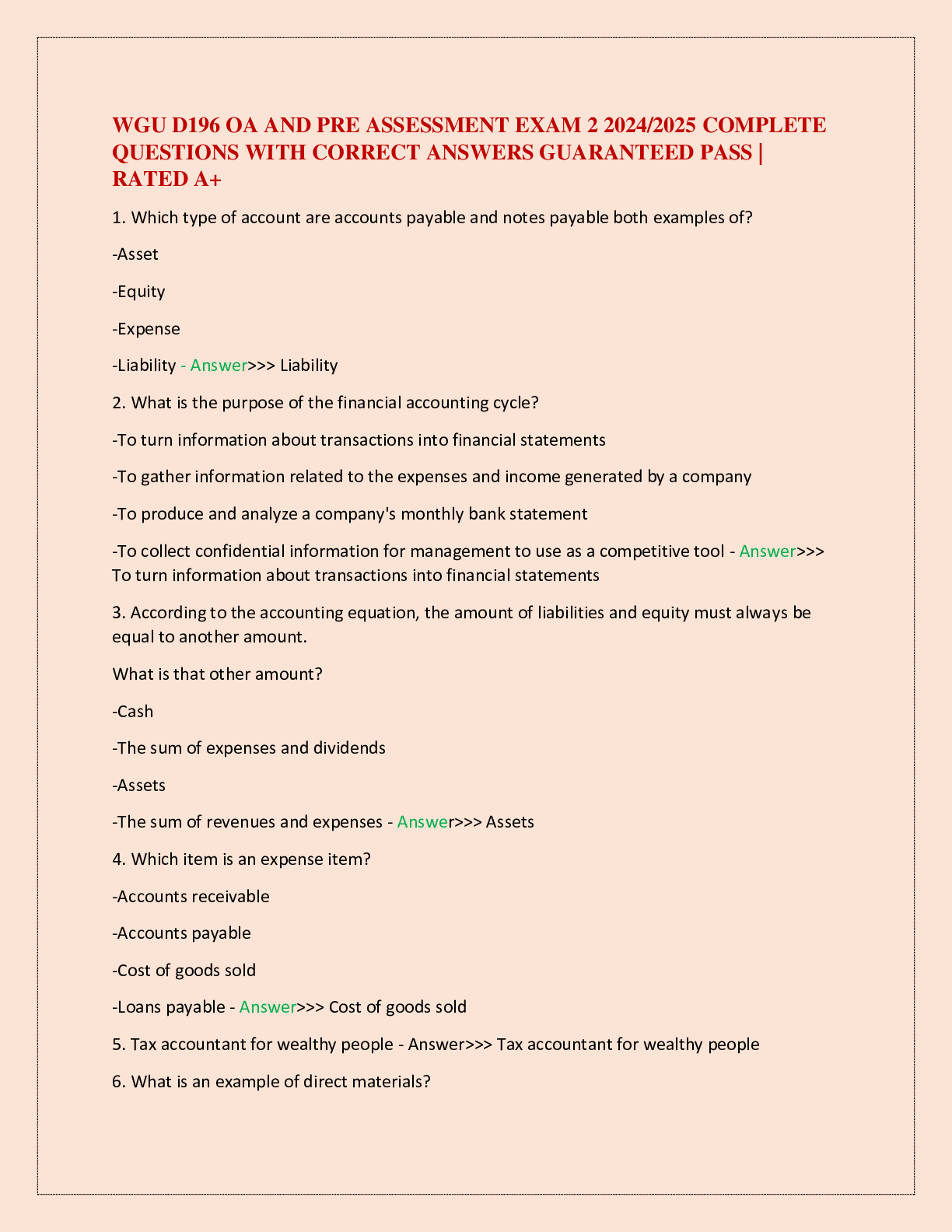

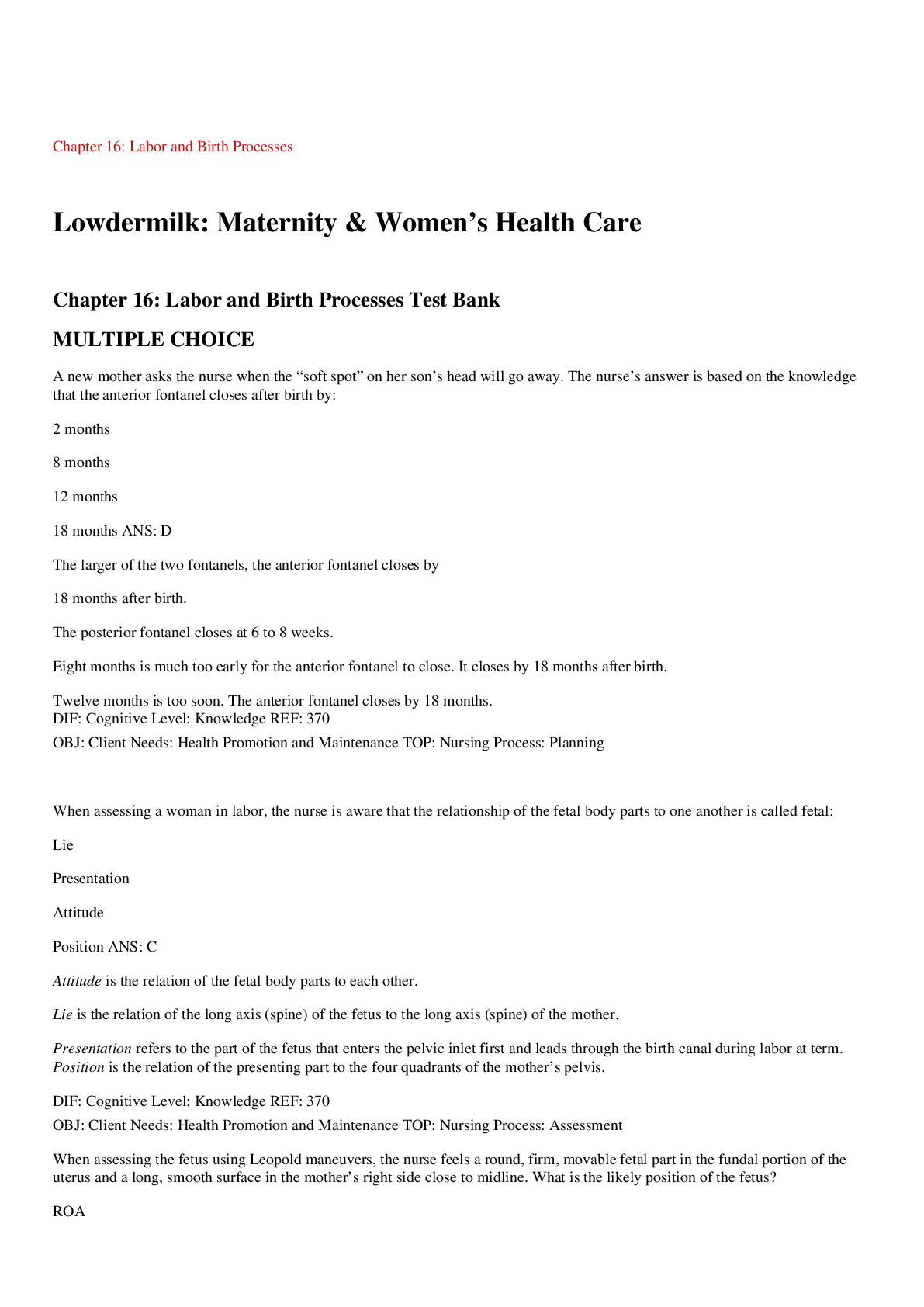

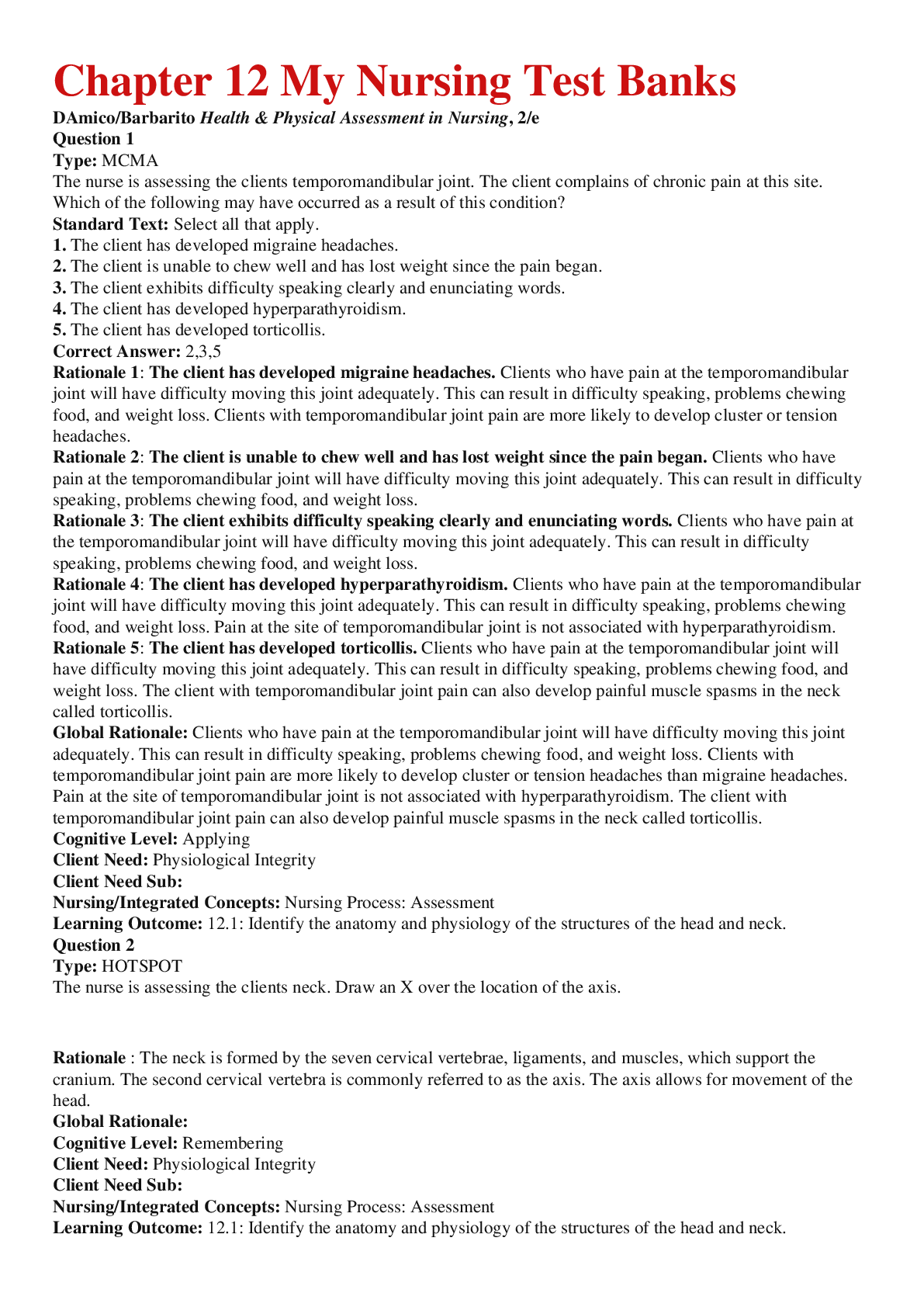
.png)
